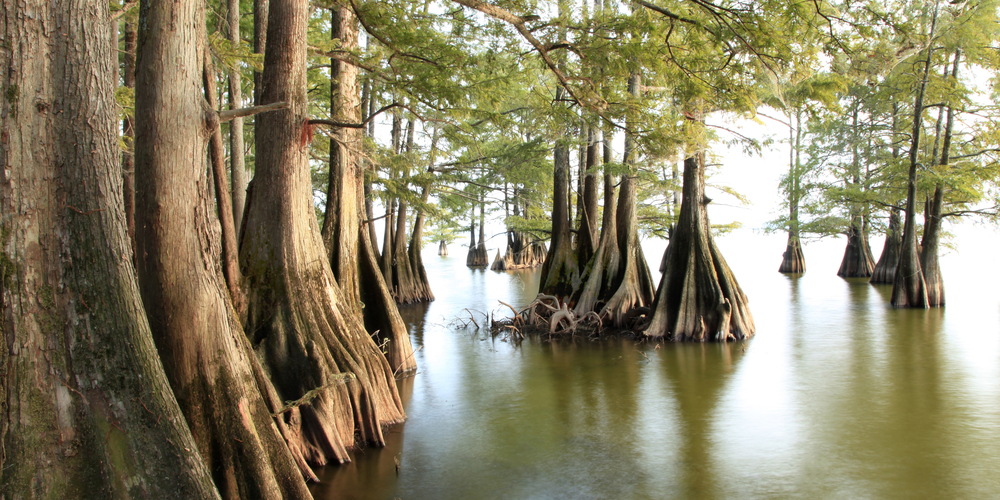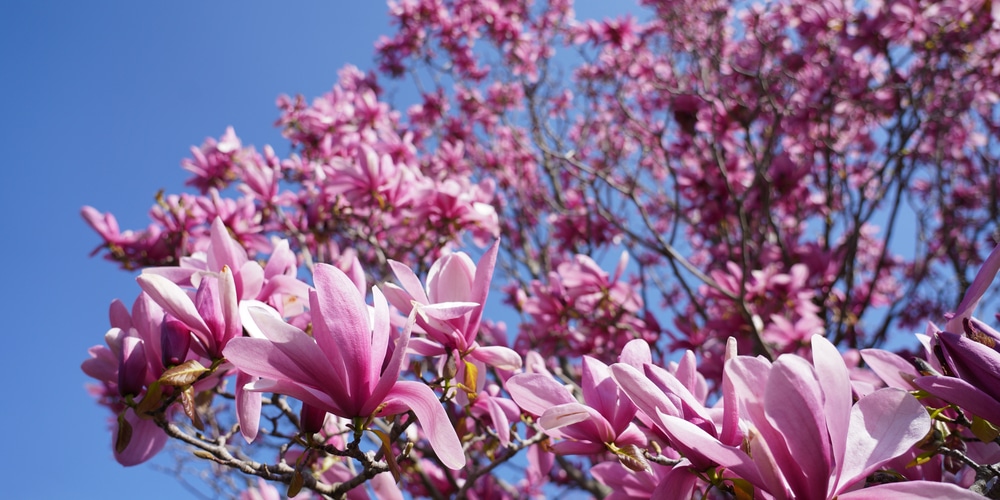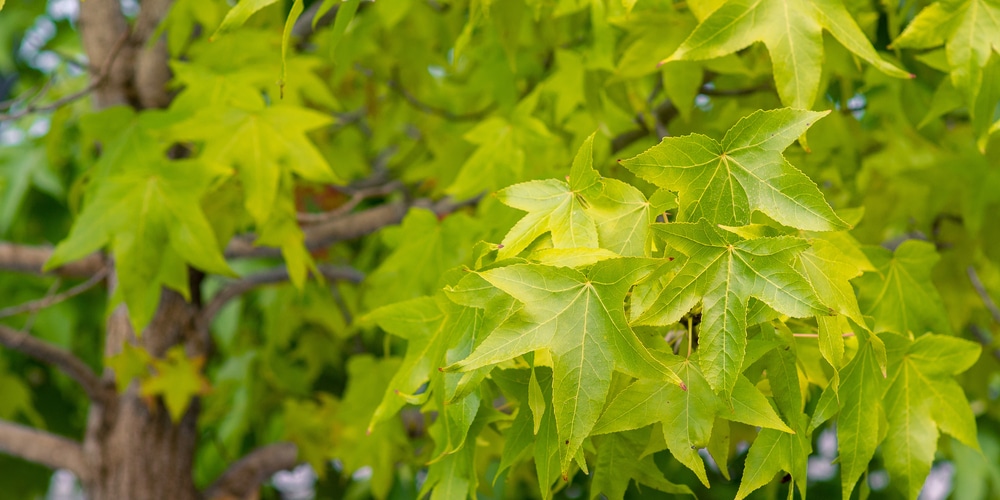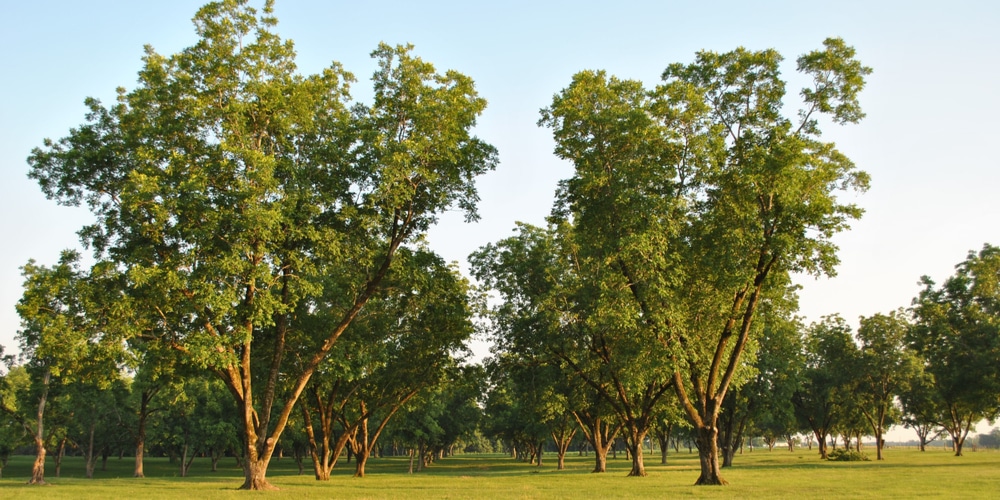Spanish moss is one of the most iconic symbols of the southern United States. This charming plant can be found draped over trees and hanging from branches, lending a touch of greenery to the humid, subtropical climate. If you’re looking to add a touch of southern charm to your yard, here are just a few of the many trees that Spanish moss loves to grow on.
Trees with Spanish moss
Did you know that despite its name, the Spanish moss is not actually a moss at all? Its elegance, combined with its easy-going nature, has made it a popular choice for gardens and home decor in the south.
While Spanish moss is not picky about the tree it grows on, there are certain species of trees that it seems to prefer.
1) Live Oak
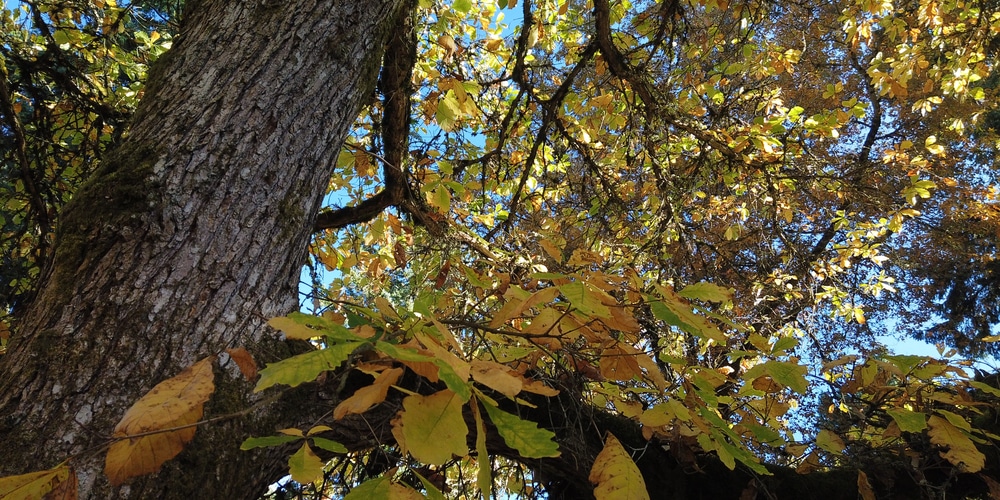
The Southern landscape is full of tall, majestic trees that seem to command the rolling hills and sweeping vistas. One such tree is the live oak, which is known for its distinctive fan-shaped leaves, as well as its graceful limbs that stretch out in seemingly every direction.
This stately tree is known not only for its size and grace but also for the beautiful Spanish moss that hangs gracefully from its branches, creating an ethereal backdrop to any landscape.
Depending on the climate and regional soil conditions, live oaks can thrive throughout the South, from Georgia to Texas and Louisiana, flourishing in both coastal plains and more inland areas. Whether draped over rolling hills or clustered densely along riverbanks and waterways, this stunning tree is a true Southern gem.
This tree is not only beautiful but also very resilient – it is able to withstand hurricanes and other severe weather conditions. Its deep roots help anchor it in the ground, making it less likely to be uprooted in high winds.
With its distinctive deep green leaves and sprawling canopy stretching far above the ground, the live oak is truly a sight to behold.
2) Bald Cypress
Draped over in a picturesque fashion, Spanish moss hangs from the branches of bald cypress trees in swamps and wetlands throughout the South. This tree is a common sight in bayous and along riverbanks, where it gets its feet wet in the murky water below.
While it’s often associated with dark and dreary environments, the bald cypress is actually a beautiful tree that is well-suited to a variety of landscapes. Its needles are a deep green, and its branches are covered in soft, feathery moss.
In the fall, the leaves of the bald cypress tree turn a beautiful golden color before they eventually drop off, leaving the tree looking like it is draped in a blanket of gold.
The bald cypress is a deciduous tree, which means that it loses its leaves in the fall and winter. However, unlike other deciduous trees, the bald cypress actually grows new leaves in the spring and summer. This tree is also unique because it can grow in both wet and dry environments.
3) Magnolia
The majestic magnolia tree is a true southern gem and one that is unique in its ability to support Spanish moss. With its broad, dark green leaves and eye-catching white flowers, the magnolia tree is not only beautiful but also long-lived, with some varieties surviving well over a century.
Additionally, the magnolia’s boughs are thick and sturdy, helping them to withstand even harsh weather conditions.
And because of this durability, these trees provide the perfect framework for Spanish moss to hang down from their branches and create a picturesque canopy under which one can bask in the cool shade on sultry summer days.
Whether you’re admiring their graceful beauty from afar or nestling beneath their shade on a hot day, there’s no denying that magnolias are truly a Southern treasure.
4) Sweetgum
A quintessential sight in the Southern landscape, sweetgum trees are easily recognized by their star-shaped leaves and gumballs that dot their branches. Towering over the lush undergrowth of moss-covered forest floors, their distinctively spiky leaves and conical appearance gives them an air of majesty and beauty.
Spanish moss thrives in the humid conditions of the South, and sweetgum trees are no exception. The long, hanging tendrils of Spanish moss drape down from the branches of these trees, creating a stunningly picturesque scene. Whether you’re taking a leisurely stroll through the woods or simply admiring their beauty from afar, sweetgum trees are sure to take your breath away.
5) Pecan
Although the Pecan tree is a lesser-known host of Spanish moss, this shouldn’t take away from its beauty.
Pecan trees are actually quite common in the South and can be found in various landscapes, from woodlands to pecan groves. As a type of hickory tree, its strong trunk, with thick dark barks, can support the weight of Spanish moss.
Pecan leaves are long and narrow, with a toothed edge, and range in color from dark green to yellow-green.
These trees also produce edible nuts enjoyed by humans and animals alike. In the fall, the pecan tree leaves turn a beautiful golden color, making it a stunning addition to any landscape.
Where Does Spanish Moss Like to Grow?
While these five trees mentioned above are where Spanish moss is most commonly found, this isn’t to say that this plant is limited to these host trees. In fact, Spanish moss can be found growing on a wide variety of trees and shrubs throughout the South.
In general, it likes to live on trees that are found in humid environments, as this plant requires a lot of moisture to survive. Spanish moss is also more likely to be found on trees with broad leaves, as the thin leaves of most evergreen trees are not conducive to supporting this type of plant growth.
The larger the leaf, the more surface area there is for the moss to attach itself.
Although they’re popular in the South because of their moisture and humidity, Spanish moss can also be found in other parts of the world, including Central and South America, as well as Africa and Madagascar.
Trees with Spanish moss: Final thoughts
Best adapted in humid environments, Spanish moss provides a beautiful picturesque to many trees in the South. Although this flowering plant is not actually a moss, it gets its common name from its resemblance to the plant.
Spanish moss hangs down in long tendrils from tree branches, creating a beautiful canopy of greenery. If you find yourself in an area with these types of trees, take a moment to enjoy the view and appreciate all that nature has to offer!
Related Article: How Do You Remove Moss From Trees?
